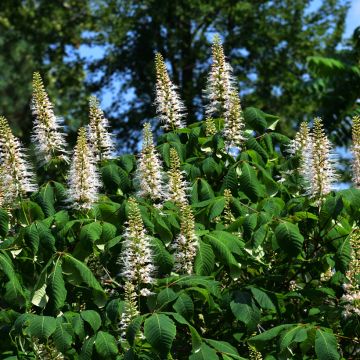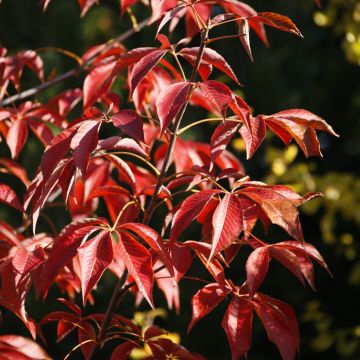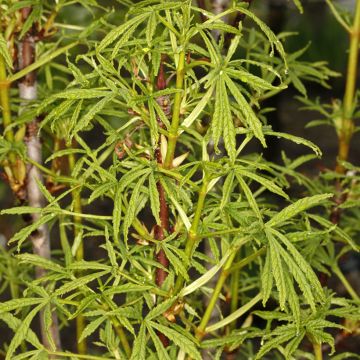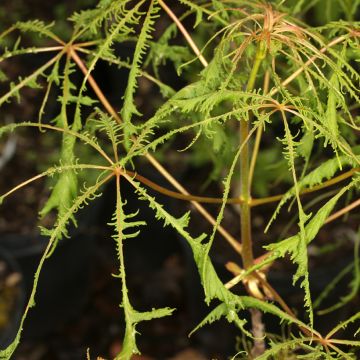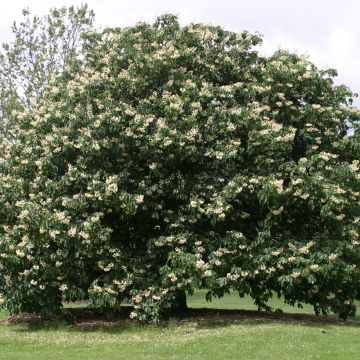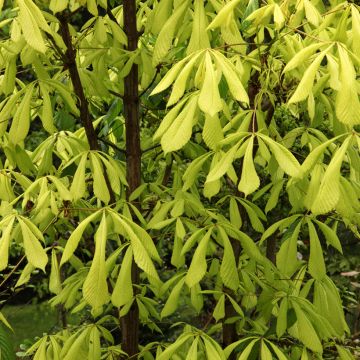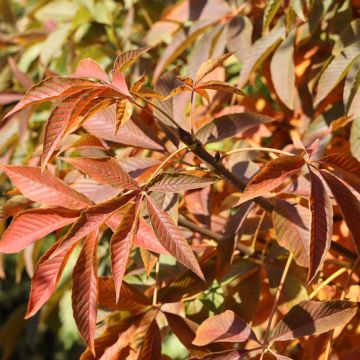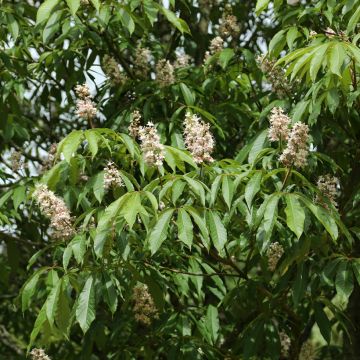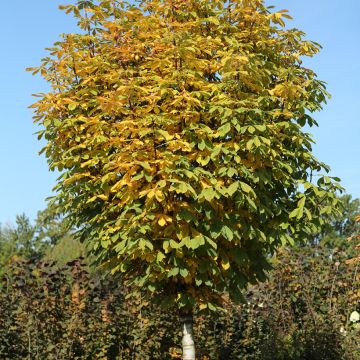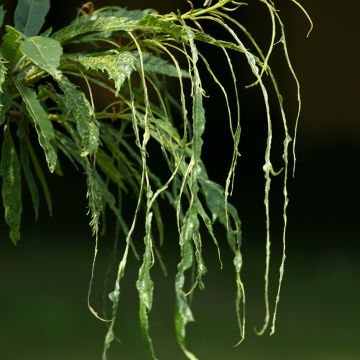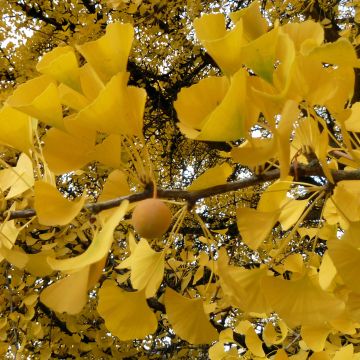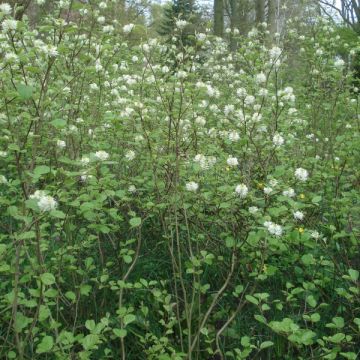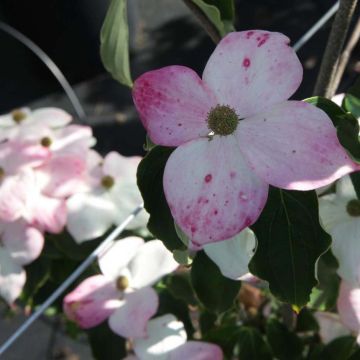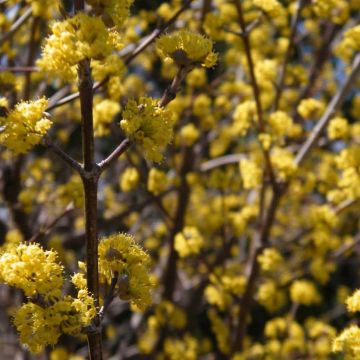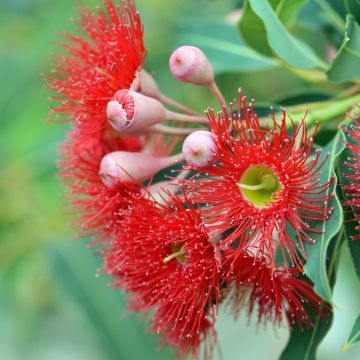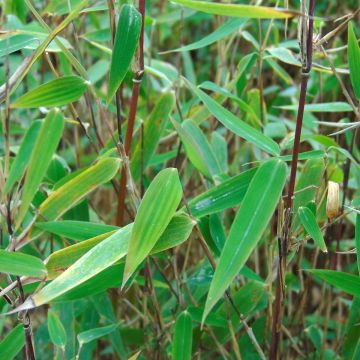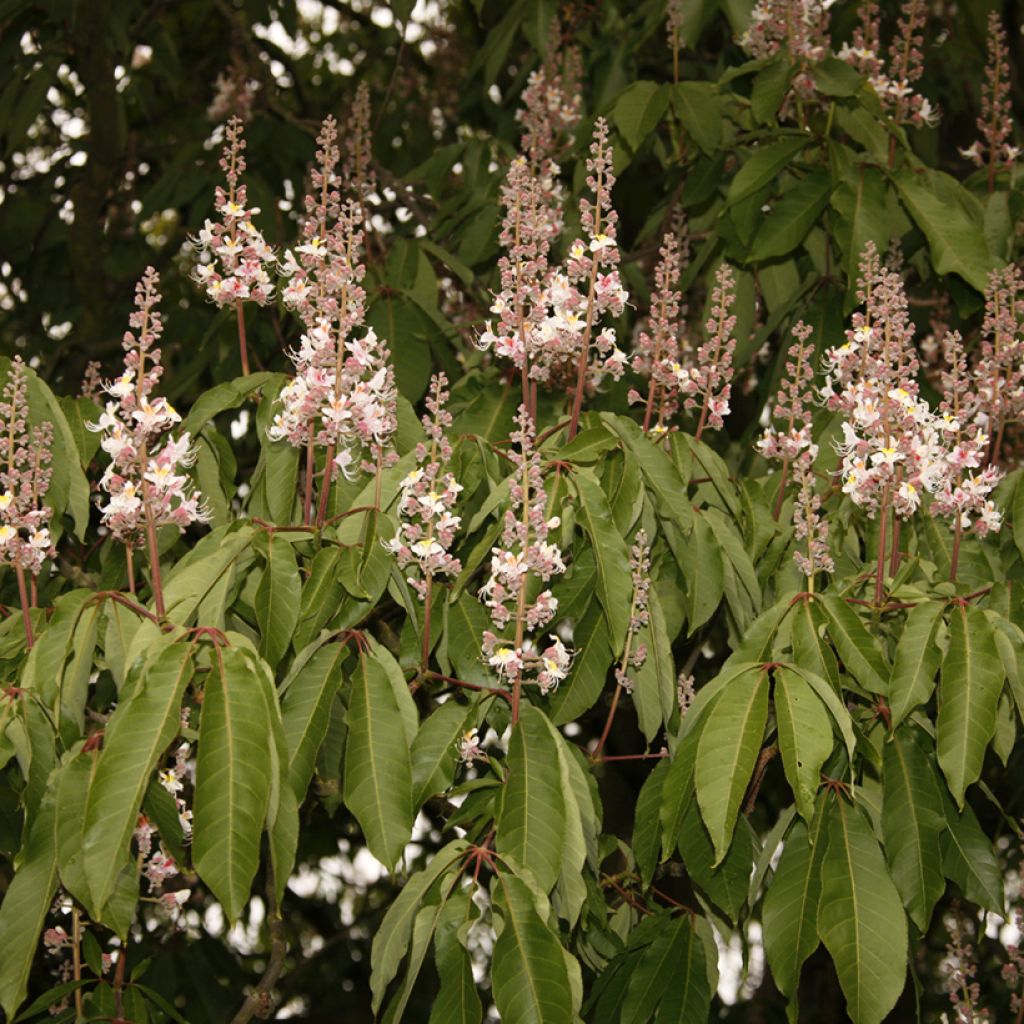

Aesculus indica Sydney - Indian horse-chestnut Pearce - Marronnier de l'Himalaya
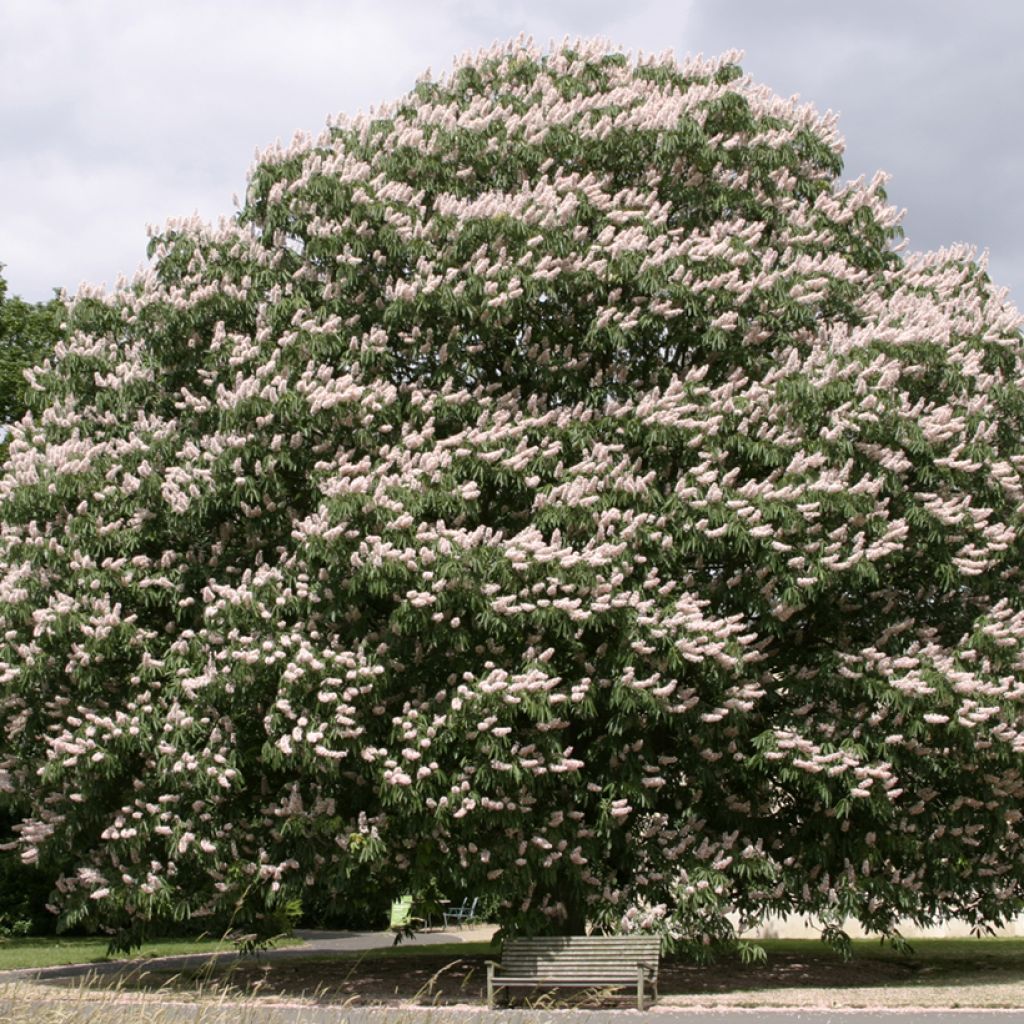

Aesculus indica Sydney - Indian horse-chestnut Pearce - Marronnier de l'Himalaya
Aesculus indica Sydney - Indian horse-chestnut Pearce - Marronnier de l'Himalaya
Aesculus indica Sydney Pearce
Indian Horse-chestnut, Himalayan Horse Chestnut
This plant carries a 24 months recovery warranty
More information
We guarantee the quality of our plants for a full growing cycle, and will replace at our expense any plant that fails to recover under normal climatic and planting conditions.
From €5.90 for pickup delivery and €6.90 for home delivery
Express home delivery from €8.90.
Does this plant fit my garden?
Set up your Plantfit profile →
Description
The Aesculus indica 'Sydney Pearce' is a Himalayan horse chestnut selected for its magnificent spring flowering. This large deciduous tree is an Indian cousin of our common horse chestnut, surpassing it in terms of elegance. It bears lush palmate foliage, beautiful purple young shoots, and stunning autumn colours. Its spring flowering, which follows that of the common horse chestnut, is spectacular, with large candle-like clusters of tricoloured flowers dominated by pink.
The Aesculus indica 'Sydney Pearce' was selected by Sydney Pearce, assistant curator at Kew Gardens, in 1935. Compared to the species, this cultivar has flowers speckled with a darker pink in denser floral panicles. Like all horse chestnuts, it belongs to the sapindaceae or hippocastanaceae family, depending on the classification. The species, sometimes called Indian horse chestnut, is native to the northwest Himalayas, mountainous regions of the Indian subcontinent, Pakistan, and Afghanistan. It is a large tree that can reach a height of 20 m with a spread of 15 to 20 m. It has a short trunk, sometimes branched, topped by a high, dense, dome-shaped canopy. Its bark is brown-grey, smooth but fissured. The deciduous foliage appears in spring and falls in autumn. The leaves are opposite on the branches, palmate, composed of 5 to 7 petiolate leaflets, elliptical, lanceolate, pointed at their tips, finely toothed along the edges, and can measure up to 22 cm long. When they first appear in spring, the young leaves are purple to bronze in colour. They then turn dark green and finally change to a late orange-yellow in November before falling. Flowering occurs in June, on already leafed-out branches. It takes the form of large upright cylindrical clusters called thyrses, measuring 20-22 cm long and 10 cm wide, composed of numerous small flowers with 4 petals, 2.5 cm long, in a blend of white, yellow, and fairly bright pink. After pollination by insects, oval fruits form, containing a single large shiny dark brown seed, flattened, with a diameter of 2.5 cm. The hardiness of this horse chestnut is estimated at -12 °C, at its lowest for a mature specimen.
The Himalayan horse chestnut 'Sydney Pearce' thrives in temperate climates, not too cold in winter and not too hot in summer. It likes well-drained but not too dry soils. Due to its significant growth, it is planted as a solitary specimen, in a well-exposed location, on a large lawn, or as a shade tree near a terrace. It will also make a good impression at the edge of a large plot overlooking the countryside. Take into account its size before adopting it in the garden.
Report an error about the product description
Plant habit
Flowering
Foliage
Botanical data
Aesculus
indica
Sydney Pearce
Sapindaceae
Indian Horse-chestnut, Himalayan Horse Chestnut
Pavia indica Sydney Pearce
Himalayas
Other Aesculus - Horse Chestnut
Planting and care
The Himalayan Horse Chestnut Sydney Pearce should be planted in spring or autumn in a well-drained soil, preferably fairly rich, slightly acidic, neutral or slightly alkaline. It is a moderately hardy tree (-12°C at its lowest) that thrives in temperate climates. Plant it in a sunny location, in a well-cleared area. Give it some space, as it can reach a width of 15m for the crown. Water and mulch to maintain soil moisture for young plants. Once well-rooted, it will generally rely on rainwater in favourable climates.
Pruning may be necessary for larger specimens to limit the size of the crown or remove lower branches: do this in winter. To prevent pest attacks (rarely fatal), collect leaves in autumn and dispose of them. Trapping male butterflies using a sex pheromone (funnel traps) can also limit attacks.
Planting period
Intended location
Care
This item has not been reviewed yet - be the first to leave a review about it.
Striking foliage shrubs
Haven't found what you were looking for?
Hardiness is the lowest winter temperature a plant can endure without suffering serious damage or even dying. However, hardiness is affected by location (a sheltered area, such as a patio), protection (winter cover) and soil type (hardiness is improved by well-drained soil).

Photo Sharing Terms & Conditions
In order to encourage gardeners to interact and share their experiences, Promesse de fleurs offers various media enabling content to be uploaded onto its Site - in particular via the ‘Photo sharing’ module.
The User agrees to refrain from:
- Posting any content that is illegal, prejudicial, insulting, racist, inciteful to hatred, revisionist, contrary to public decency, that infringes on privacy or on the privacy rights of third parties, in particular the publicity rights of persons and goods, intellectual property rights, or the right to privacy.
- Submitting content on behalf of a third party;
- Impersonate the identity of a third party and/or publish any personal information about a third party;
In general, the User undertakes to refrain from any unethical behaviour.
All Content (in particular text, comments, files, images, photos, videos, creative works, etc.), which may be subject to property or intellectual property rights, image or other private rights, shall remain the property of the User, subject to the limited rights granted by the terms of the licence granted by Promesse de fleurs as stated below. Users are at liberty to publish or not to publish such Content on the Site, notably via the ‘Photo Sharing’ facility, and accept that this Content shall be made public and freely accessible, notably on the Internet.
Users further acknowledge, undertake to have ,and guarantee that they hold all necessary rights and permissions to publish such material on the Site, in particular with regard to the legislation in force pertaining to any privacy, property, intellectual property, image, or contractual rights, or rights of any other nature. By publishing such Content on the Site, Users acknowledge accepting full liability as publishers of the Content within the meaning of the law, and grant Promesse de fleurs, free of charge, an inclusive, worldwide licence for the said Content for the entire duration of its publication, including all reproduction, representation, up/downloading, displaying, performing, transmission, and storage rights.
Users also grant permission for their name to be linked to the Content and accept that this link may not always be made available.
By engaging in posting material, Users consent to their Content becoming automatically accessible on the Internet, in particular on other sites and/or blogs and/or web pages of the Promesse de fleurs site, including in particular social pages and the Promesse de fleurs catalogue.
Users may secure the removal of entrusted content free of charge by issuing a simple request via our contact form.
The flowering period indicated on our website applies to countries and regions located in USDA zone 8 (France, the United Kingdom, Ireland, the Netherlands, etc.)
It will vary according to where you live:
- In zones 9 to 10 (Italy, Spain, Greece, etc.), flowering will occur about 2 to 4 weeks earlier.
- In zones 6 to 7 (Germany, Poland, Slovenia, and lower mountainous regions), flowering will be delayed by 2 to 3 weeks.
- In zone 5 (Central Europe, Scandinavia), blooming will be delayed by 3 to 5 weeks.
In temperate climates, pruning of spring-flowering shrubs (forsythia, spireas, etc.) should be done just after flowering.
Pruning of summer-flowering shrubs (Indian Lilac, Perovskia, etc.) can be done in winter or spring.
In cold regions as well as with frost-sensitive plants, avoid pruning too early when severe frosts may still occur.
The planting period indicated on our website applies to countries and regions located in USDA zone 8 (France, United Kingdom, Ireland, Netherlands).
It will vary according to where you live:
- In Mediterranean zones (Marseille, Madrid, Milan, etc.), autumn and winter are the best planting periods.
- In continental zones (Strasbourg, Munich, Vienna, etc.), delay planting by 2 to 3 weeks in spring and bring it forward by 2 to 4 weeks in autumn.
- In mountainous regions (the Alps, Pyrenees, Carpathians, etc.), it is best to plant in late spring (May-June) or late summer (August-September).
The harvesting period indicated on our website applies to countries and regions in USDA zone 8 (France, England, Ireland, the Netherlands).
In colder areas (Scandinavia, Poland, Austria...) fruit and vegetable harvests are likely to be delayed by 3-4 weeks.
In warmer areas (Italy, Spain, Greece, etc.), harvesting will probably take place earlier, depending on weather conditions.
The sowing periods indicated on our website apply to countries and regions within USDA Zone 8 (France, UK, Ireland, Netherlands).
In colder areas (Scandinavia, Poland, Austria...), delay any outdoor sowing by 3-4 weeks, or sow under glass.
In warmer climes (Italy, Spain, Greece, etc.), bring outdoor sowing forward by a few weeks.

































